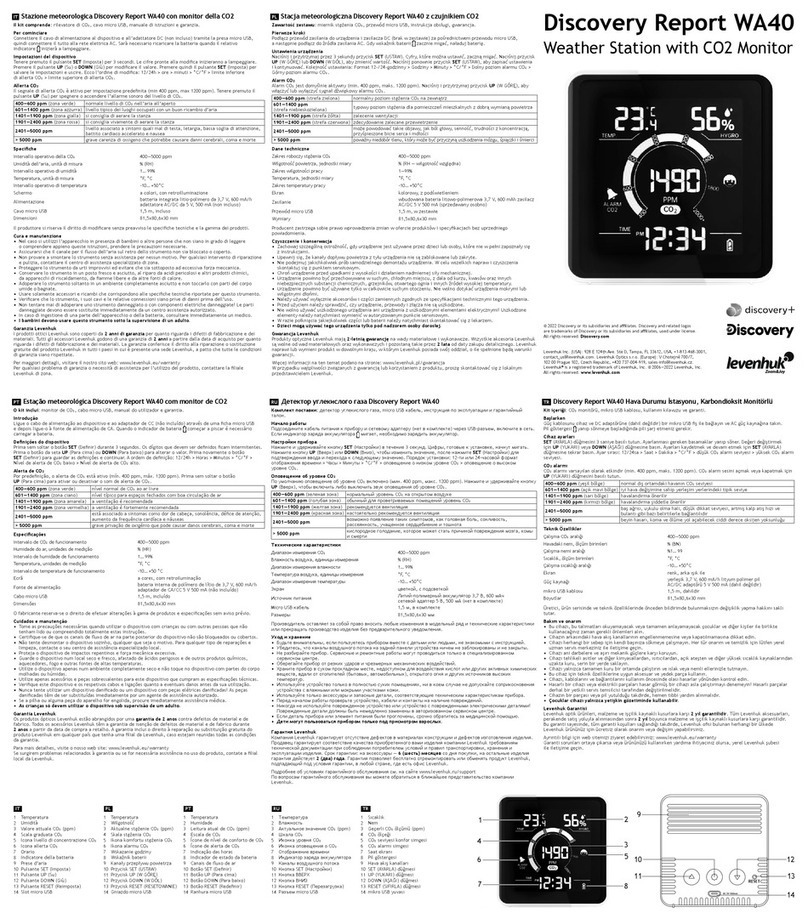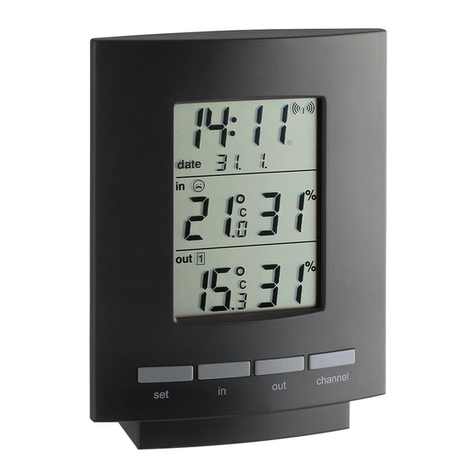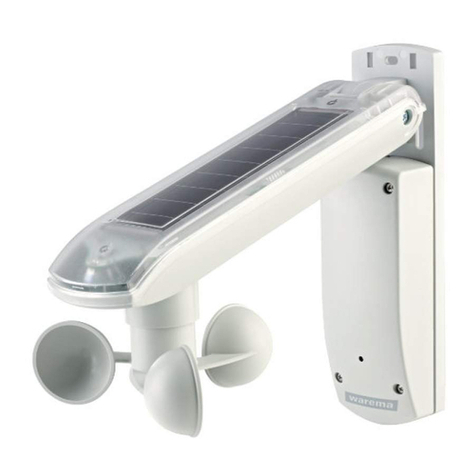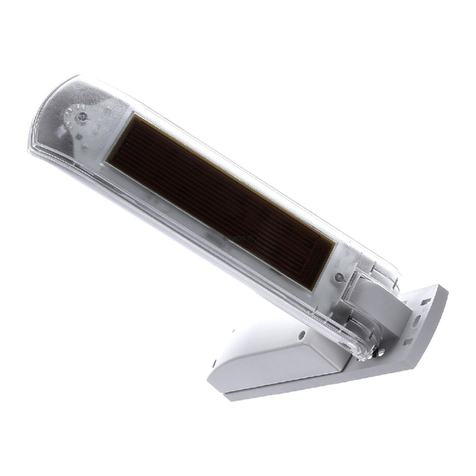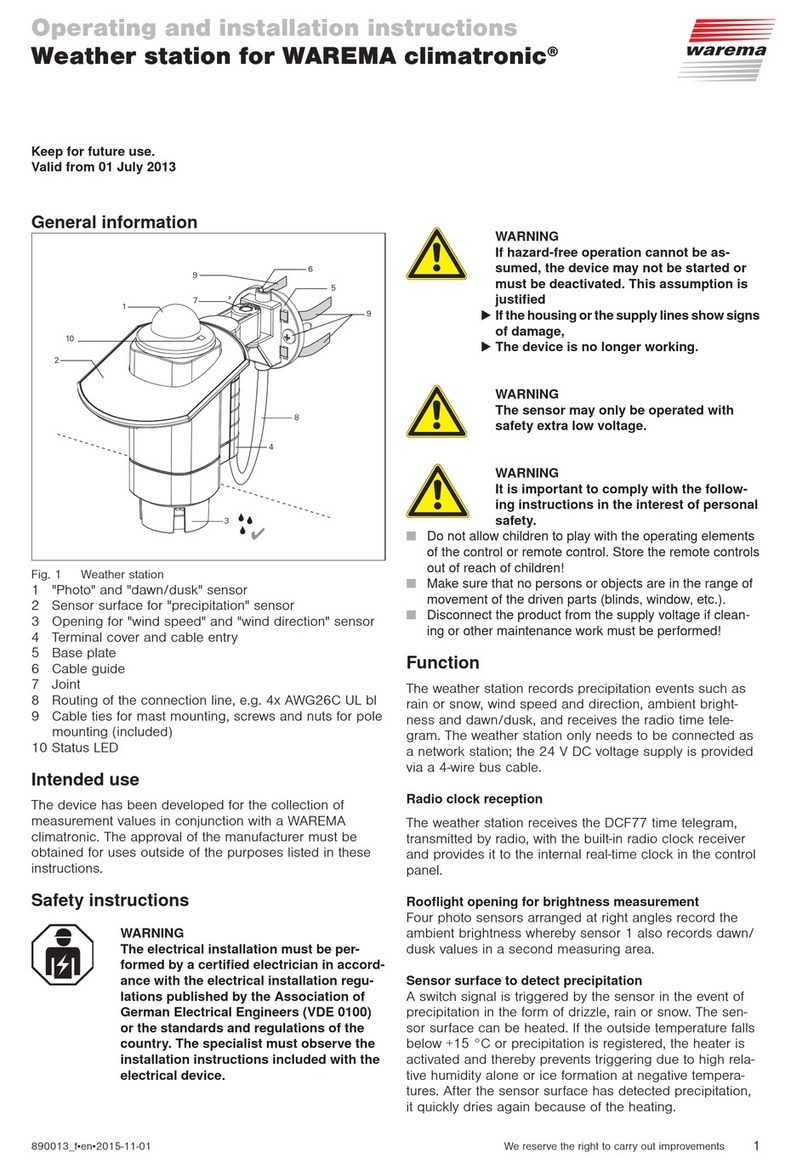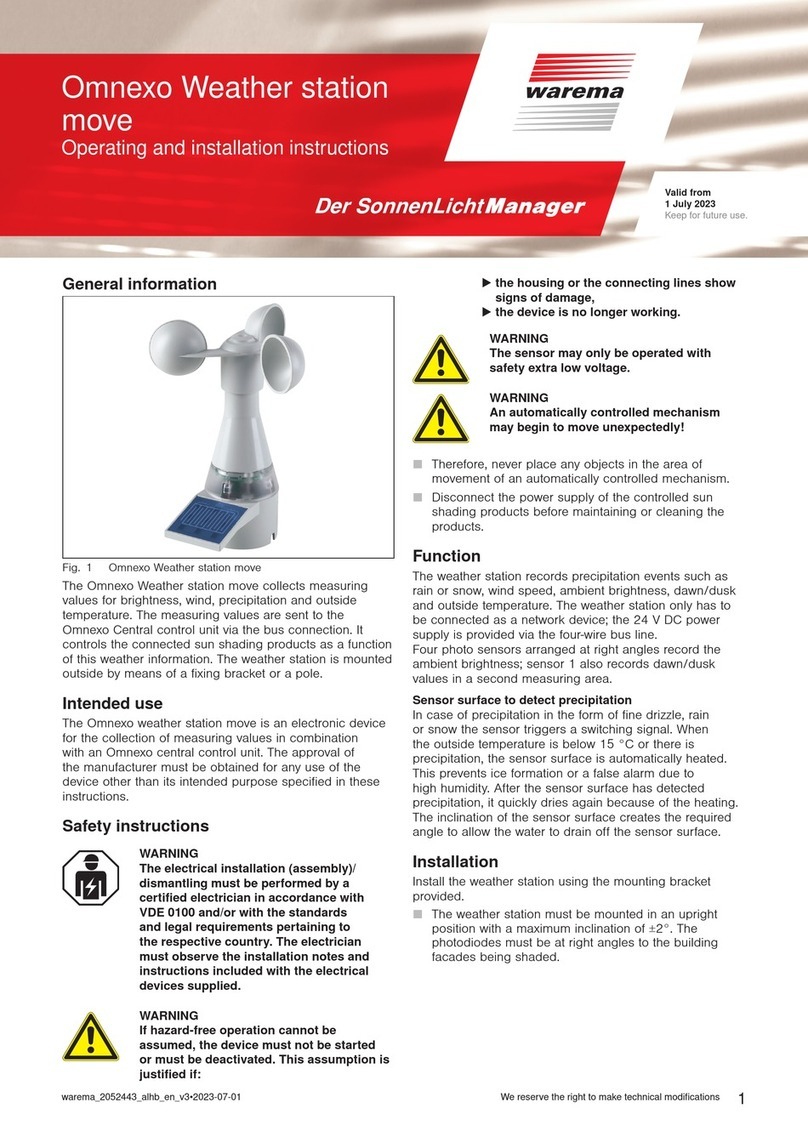
5
890463_k•en•2019-10-01 We reserve the right to carry out improvements
If the sun shading system does not move up, the wind
sensor may not have been learned. To test whether the
wind sensor was correctly learned into the receiver:
Move the "Wind" switch on the weather station to any
position other than TEST. Move the "Brightness" switch
to OFF. Lower the sun shading system slightly and
press the button on the weather station.
If wind monitoring has been learned in correctly, the
sun shading system moves down for approx. one
second.
If the sun shading system does not move during this
test, wind monitoring was not learned in. Learn in wind
monitoring again separately (see „Learning in functions
individually“).
OTICEN In this test, EWFS tubular motors do not
respond when the button is pressed.
2. Test the sun control
Move the sun shading system manually to its middle
position.
Move the "Wind" switch on the weather station to the
TEST position and the "Brightness" switch to position
"1".
Trigger a wind alarm: Cause the wind wheel to turn
quickly and hold on to the wheel as soon as the sun
shading system moves out.
After 1 or 2 minutes the sun shading system must
move down again.
If the sun shading system does not move down, the photo
sensor may not have been learned. To test whether the
photo sensor was learned into the receiver correctly:
Move the "Brightness" switch on the weather station to
any position other than "OFF". Move the sun shading
system down slightly and press the button on the
weather station.
If the sun control was learned in correctly, the sun
shading system moves down for approx. one second.
If the sun shading system does not move during this test,
the sun control was not learned in. Learn in the sun control
again separately (see „Learning in functions individually“).
OTICEN In this test, EWFS tubular motors do not
respond when the button is pressed.
Learning in functions individually
If problems arose when learning in the weather station of a
sun shading product, the functions can be learned into the
sun shading product separately later on.
Learning the wind monitoring function individually
Perform the following steps consecutively:
Place receiver1 into learn
mode: Take the hand-held
transmitter into which the
master channel was learned
(I), press and hold the learn
button, external roller blind1
waves once, release the
button.
Set the switches on the
weather station: The "WIND"
switch is located in any
position other than "TEST",
and the "Brightness" switch is
in the "OFF" position.
Ι
Learn in wind monitoring:
Press the button on the
weather station and hold it
until the sun shading system
stops moving (the external
venetian blind waves once).
Release the button. The
weather station is now an
auxiliary channel for external
venetian blind1. Wind
monitoring was learned in at
the same time.
End the learn mode: Take
the hand-held transmitter with
the master channel (I) and
press the "Up" or "Down"
button.
Wind monitoring is now learned into the sun shading
product.
Learning in the sun control individually
Perform the following steps consecutively:
Place receiver1 into learn
mode: Take the hand-held
transmitter into which the
master channel was learned
(I), press and hold the learn
button, external roller blind1
waves once, release the
button.
Set the switches on the
weather station: The "WIND"
switch is located in the
"TEST" position and the
"Brightness" switch is in any
position other than the "OFF"
position.
Learn in the sun control:
Press the button on the
weather station and hold it
until the sun shading system
stops moving (the external
venetian blind waves once).
Release the button. The
weather station is now an
auxiliary channel for external
venetian blind1. The sun
control was learned in at the
same time.
End the learn mode: Take
the hand-held transmitter with
the master channel (I) and
press the "Up" or "Down"
button.
The sun control is now learned into the sun shading
product.
Return the wind monitoring setting back to the original
value.
Ι
Ι
Ι

